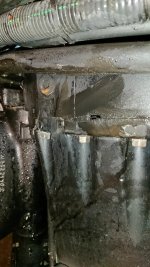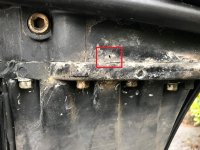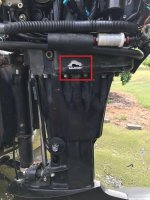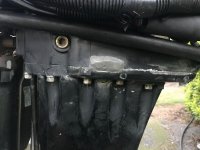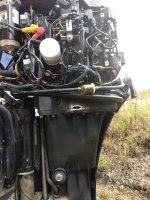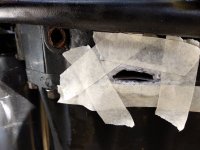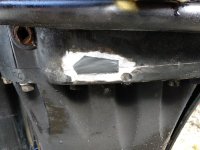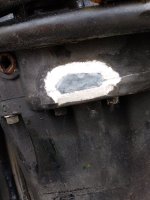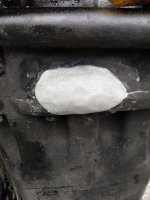Hi.
On my 2005 Mercury EFI 60hp outboard I have an exhaust leak between the adaptor plate and the driveshaft housing. There is quite some of the aluminum that has corroded away from both casings so not really sure if it will be reparable. I have sent both casings to a guy claiming to be aluminum weld spe******t - so we will see how that turns out.
However, I do have two questions that I was hoping to get some help on!
#1, How to properly assemble these casings again? I read somewhere that a sealant of some kind was recommended? If so, what type? I am expecting quite hot temperatures here since a lot of the aluminium has been corroded away.
#2, Aluminum has not only been corroded away where the leak is, also at like the first "bend" of the exhaust gas channel in the adapotor plate casing. What could be the reason for this? Is the engine running to hot for some reason?
Br,
Henrik
On my 2005 Mercury EFI 60hp outboard I have an exhaust leak between the adaptor plate and the driveshaft housing. There is quite some of the aluminum that has corroded away from both casings so not really sure if it will be reparable. I have sent both casings to a guy claiming to be aluminum weld spe******t - so we will see how that turns out.
However, I do have two questions that I was hoping to get some help on!
#1, How to properly assemble these casings again? I read somewhere that a sealant of some kind was recommended? If so, what type? I am expecting quite hot temperatures here since a lot of the aluminium has been corroded away.
#2, Aluminum has not only been corroded away where the leak is, also at like the first "bend" of the exhaust gas channel in the adapotor plate casing. What could be the reason for this? Is the engine running to hot for some reason?
Br,
Henrik


